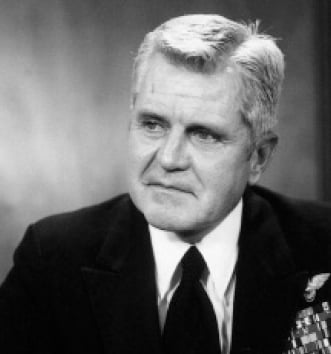August 10 marked the 50th anniversary of President Lyndon Johnson’s signing of the Gulf of Tonkin Resolution, which Congress had passed three days earlier. The resolution gave a green light to the Vietnam War’s “escalation,” what in today’s Pentagonese is called a “surge.” In March 1965, two Battalion Landing Teams of the 9th Marine Expeditionary Brigade came ashore north of Da Nang as the first major U.S. combat forces in-country.
For Americans, the war would last until all combat troops finally left in 1973. The last evacuation chopper lifted off from the U.S. embassy in Saigon on April 30, 1975, as Soviet-made North Vietnamese tanks were taking Saigon (soon to be renamed Ho Chi Minh City), the former capital of our South Vietnamese ally. The immense expense of the war, plus that of the Great Society—LBJ’s “guns and butter” policy—effectively bankrupted the United States by the early 1970’s, leading to the “stagflation” (stagnation plus inflation) of that decade.
Arguments about the war consumed the nation, even infecting domestic policy. They continue today and will probably last until the final baby boomer trips into the afterlife.
Over the years we’ve learned a lot. For one, in speeches at the time, President Johnson oozed war optimism. But according to secret tapes he made, on May 27, 1964, he told National Security Advisor McGeorge Bundy, “I don’t see what we can ever hope to get out of there with once we’re committed. . . . I don’t think it’s worth fighting for and I don’t think we can get out. And it’s just the biggest damn mess that I ever saw.”
In his famous speech on June 4, 1940, Winston Churchill told Parliament, “We shall fight on the beaches, we shall fight on the landing grounds, we shall fight in the fields and in the streets, we shall fight in the hills; we shall never surrender.” But if he had whispered behind the scenes, “We shall never win,” Brits today would be speaking German.
You can win only if you think you will.
We know, too, that the Gulf of Tonkin Incident, which led to the resolution, was faked. The key witness was one of America’s greatest warriors, the late Adm. James Bond Stockdale. Although remembered now largely for being Ross Perot’s running mate in the 1992 presidential election, Stockdale was a storied Navy pilot commanding Carrier Air Wing 16 when he was shot down over enemy territory in 1965.
As a prisoner of war tortured by the North Vietnamese, his bravery kept the prisoners together, earning him the Medal of Honor. Despite the torture, he kept a secret. (He later wrote for Chronicles and served on the board of directors of The Rockford Institute.)
The Gulf of Tonkin Incident actually was two attacks. On August 2, 1964, Stockdale led Fighter Squadron 51 as part of a battle with Vietnamese torpedo boats. But the key events occurred on August 4, when the “second attack,” as it’s sometimes called, led Johnson to order retaliatory attacks, then call for the passage of the Gulf of Tonkin Resolution. As LBJ told the American people in an August 5 speech, “The determination of all Americans to carry out our full commitment to the people and to the government of South Vietnam will be redoubled by this outrage.”
Although the August 4 “second attack” was portrayed as an actual North Vietnamese attack, three decades later Stockdale revealed what had really happened. He said he “had the best seat in the house to watch that event, and our destroyers were just shooting at phantom targets—there were no PT boats there. . . . There was nothing there but black water and American fire power.”
In 2004, a review of the military signals intelligence of the “second attack” was made by John Prados for the National Security Archives of George Washington University. Padros concluded, “[T]he material clearly shows Washington rushing to a judgment on events in the Tonkin Gulf, which it seized upon as evidence in support of its predetermined intention to escalate the conflict in Vietnam.”
The war is long over. Vietnam, like China, has since switched from communism to state capitalism. Even LBJ’s “credibility gap” is part of history.
For Americans, all that remains is the remembrance of the valor of such men as Admiral Stockdale.

Leave a Reply